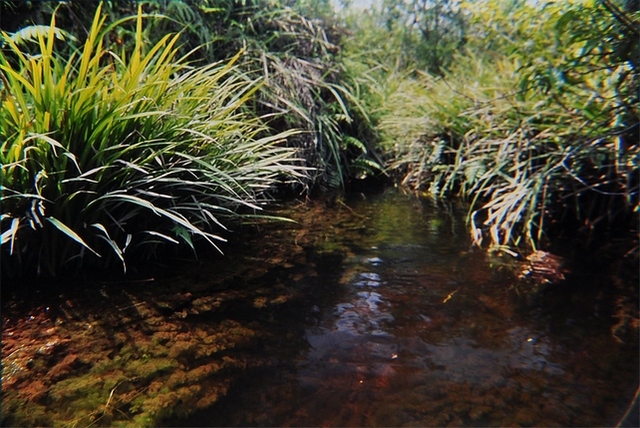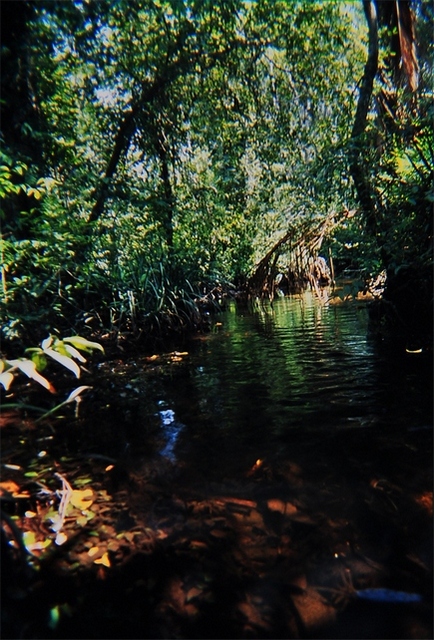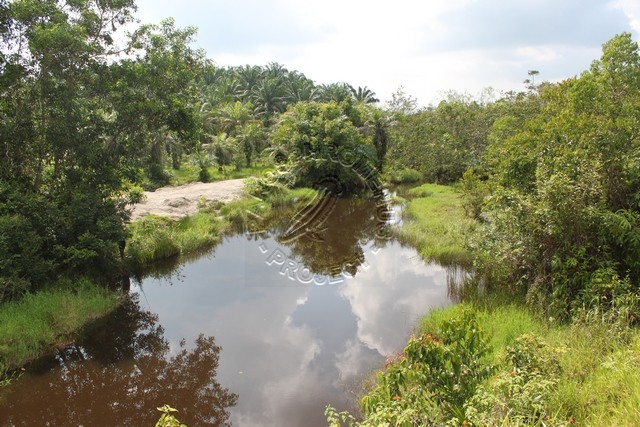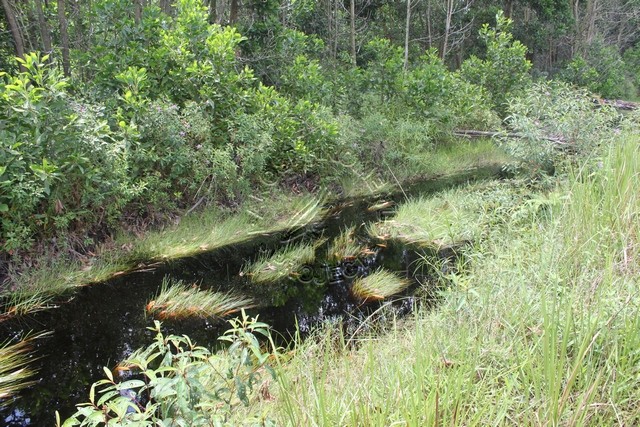What you need to know about the natural environment of Licorice Gourami
The original habitats of Parosphromenus are flowing streams within peat swamps, where fresh spring and rain water runs over laterite and sandy ground, which is completely free of lime. Sometimes, Parosphromenus fish

are found in stagnant, dry stream beds in the dry season or on the flooded forest floor in the rainy season.
Furthermore, very old layers of dead leaves, wood and thorny thickets characterise this type of habitat. There is little light; thus for the survival of the inhabitants of such an environment, it is essential to show luminous colours. Only minimal salt content of these water bodies is detectable and they show very low pH values, as do peat swamps in other areas in the world. These values go down to pH 4 or pH 3, actually a hostile environment, but Parosphromenus and the accompanying fauna have adapted to this. This environment guarantees the least possible contamination by harmful bacteria which cannot develop in large quantities. Only this enables the development of the vulnerable eggs of these fish.

These habitats are partly overgrown with weeds, less so by underwater plants, but rather by marsh and terrestrial plants on the water’s edge. On many river banks, large amounts of grasses and other plants reach into the water and form a weed zone, which is very difficult to penetrate. Because Parosphromenus favour this zone and often stay at a depth of 1 to 2 meters, it is very hard work to catch them. The dense grass bunches have to be scooped with a strong-framednet. Fishing in the open water might bring different types of fish, but no licorice gouramis.
It is necessary to know all this, if we want to keep these fish alive and healthy in the tank, especially if we want to breed them. It is not possible to try to “toughen” them. They have adapted to their environmental conditions over thousands of generations and cannot be reconditioned in a tank. However we can observe a certain adaptability of healthy adult fish, as well as in their areas of origin. Here too we find surviving populations in remnant streams, which are more or less affected by human cultivation. However the vitality of these fish is often reduced.
Read an article on the vanishing biodiversity of the peat swamps here.
(PF)(DA)



